UX DESIGN
MARKET & USER RESEARCH
USER INTERVIEWS
USER JOURNEY MAPPING
PERSONAS
INFORMATION ARCHITECTURE
USER FLOWS
WIREFRAMING
PROTOTYPING
UI DESIGN
INFOGRAPHICS
ILLUSTRATIONS

UX DESIGN
MARKET & USER RESEARCH
USER INTERVIEWS
USER JOURNEY MAPPING
PERSONAS
INFORMATION ARCHITECTURE
USER FLOWS
WIREFRAMING
PROTOTYPING
UI DESIGN
INFOGRAPHICS
ILLUSTRATIONS
Deliveroo is one of the most popular food delivery companies in the world. After all, they champion delivering convenience. Yet one rapidly growing demographic is mostly of a contrary opinion, and this is a case study about the scope of product innovation.
While Deliveroo offers what seems to be an infinite amount of choice, that, in fact, still remains irrelevant to those with specific dietary needs and lifestyle preferences. This underserved part of the population has an appetite for more clarity around the food itself and an unsatiated hunger for convenience.
Just 50 years ago, one in thirty people had allergies, while today, the number is one in three. When it comes to food, one-fifth of the global population is hypersensitive (2.6% has an allergy and 17.3% has an intolerance) and statistics show that food allergy cases have risen by up to 50% in the past decade, with a 700% rise in hospitalizations in some countries.
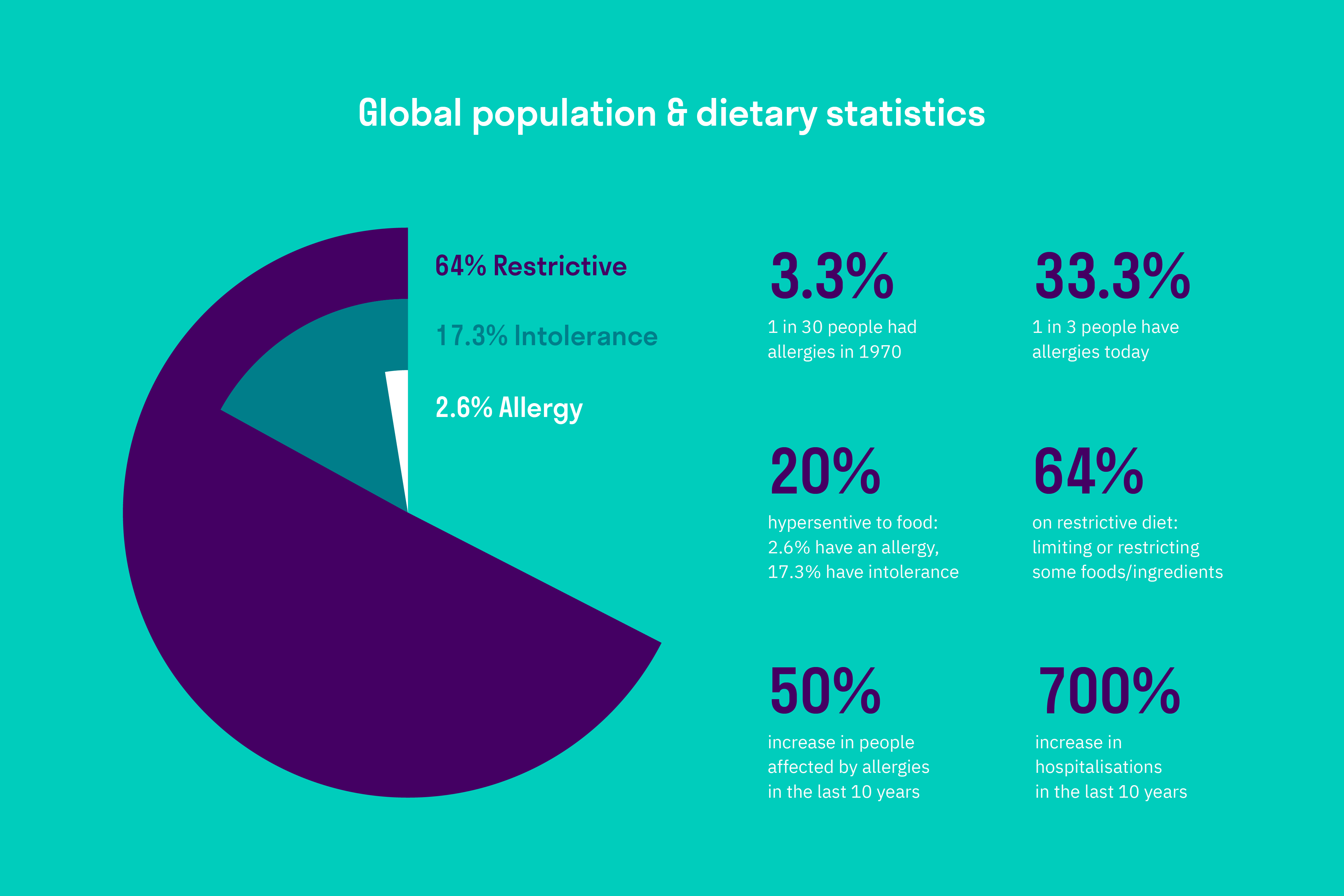
The rise of allergies, intolerances and specific dietary lifestyles
Allergies and intolerances range from life-threatening to mildly discomforting and are mainly caused by immune system imbalance. It affects 20% of the population, which have to control their food every day. Yet the group of people who avoid major allergens is much larger than just those who are allergic — nowadays, many people without any allergies or intolerances tend to avoid allergens in the food they buy.
Currently, 64% of people follow a special diet that limits or restricts the consumption of some foods or ingredients. These specific dietary lifestyle choices are not generally made due to any risk of immediate physical reaction but rather correlate with long-term health benefits, cultural traditions and lifestyle-related beliefs. Those may be intentionally losing or gaining weight, lessening one’s contribution towards climate change, or simply staying away from unhealthy foods and eating cleaner.
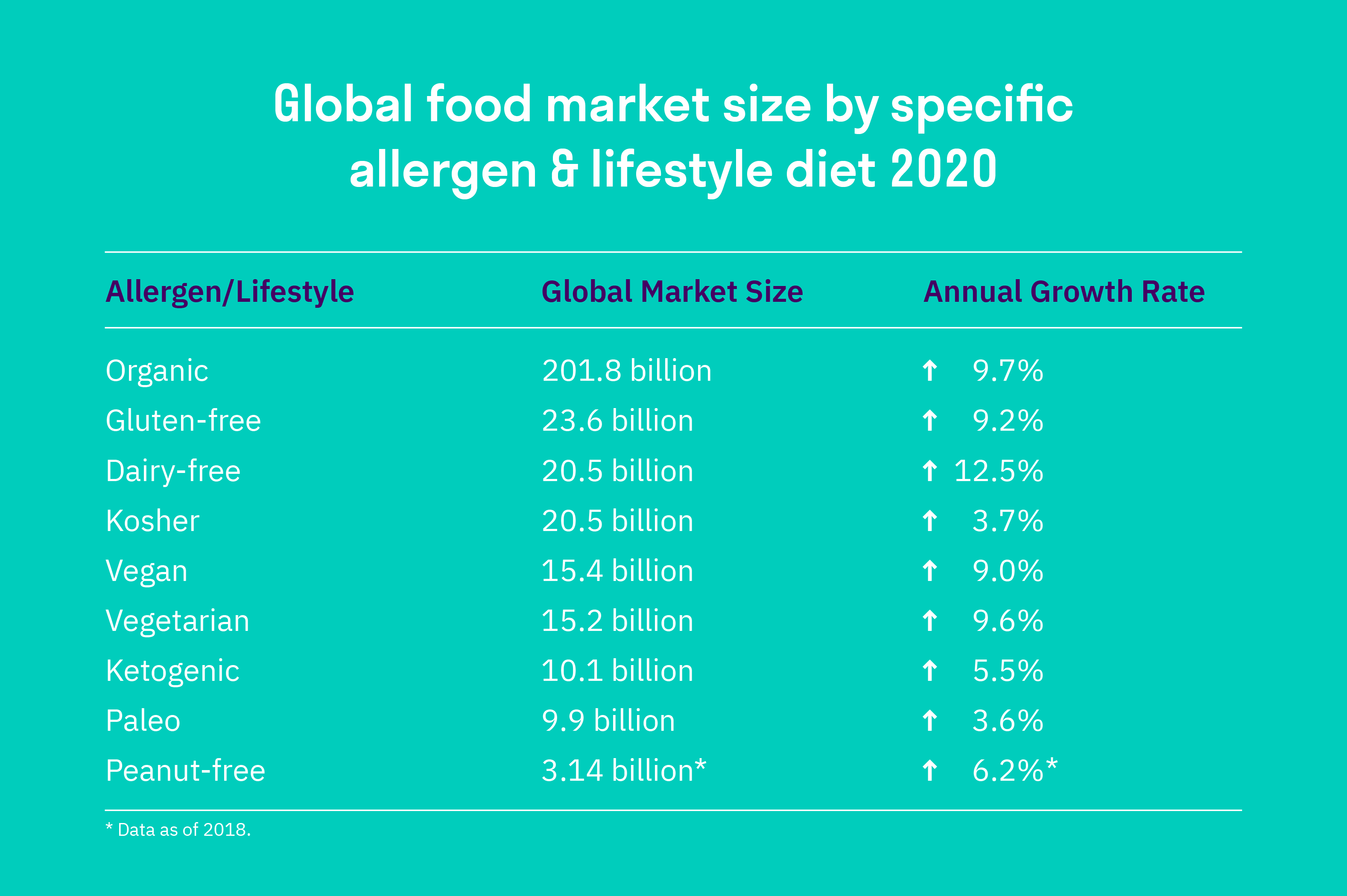
Food delivery service industry & the numbers
While the Global Food Market is worth $8.1 trillion and growing by 3.1%, the Free-From Food Market is valued at $338 billion and grows faster by 9.5%. Today, the entire Food Service Market amounts to $3.5 trillion.
The Food Delivery Service Market experienced rapid growth during the pandemic and is now worth $127 billion. It is expected to reach $192 billion by 2025, with an estimated 11% annual growth rate. This market’s largest segment is Platform-to-Consumer Delivery with a projected market volume of $79.7 billion in 2021, continuing to experience exceptional growth:

Shift in the right direction & billions in potential revenue capture
Seeing that these markets continue to expand and, in years to come, customer choices are more and more likely to be determined by the increasing food hypersensitivity and specific dietary lifestyles — may now be solid reasons to forecast that companies in this sector that will succeed the most in the future are likely to be the ones investing in this growing demographic today.
As of 2020, Deliveroo had 9 million users, worked with 140,000 restaurants and 100,000 riders, operated in 800 cities and generated $5.8 billion revenue, with an impressive 431% increase year-on-year. Given their growing market share and popularity amongst current customers, they could be looking into adding billions in potential revenue capture once they further innovate around how well they cater to the needs of those with allergies, intolerances and specific dietary lifestyles.
As the user research points out, there’s quite a large disconnect between what users with specific dietary preferences can safely choose from and what restaurants have on offer ― there are thousands of meals that would already meet many given dietary preferences, yet without sufficient dietary information, will never reach potential users.
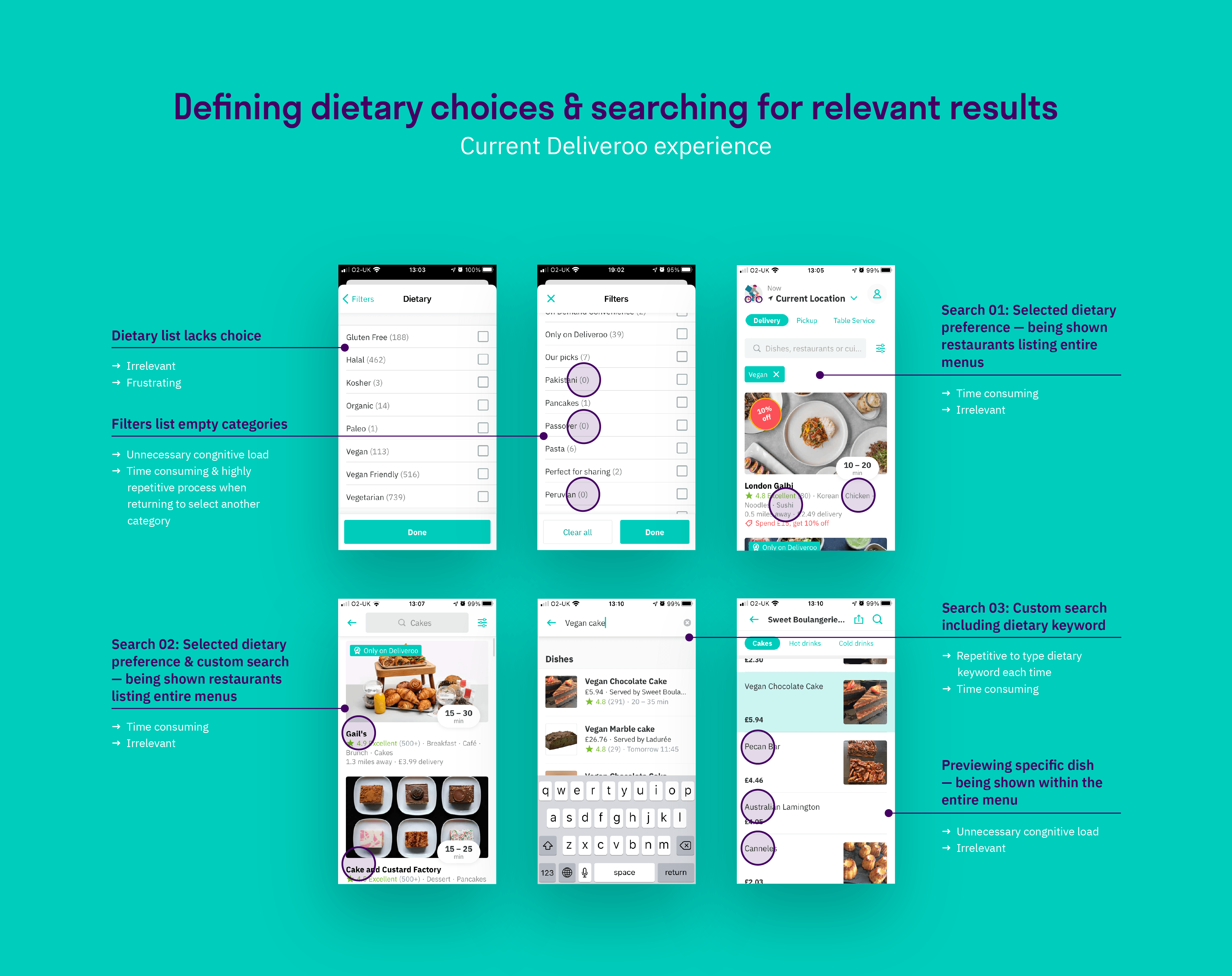
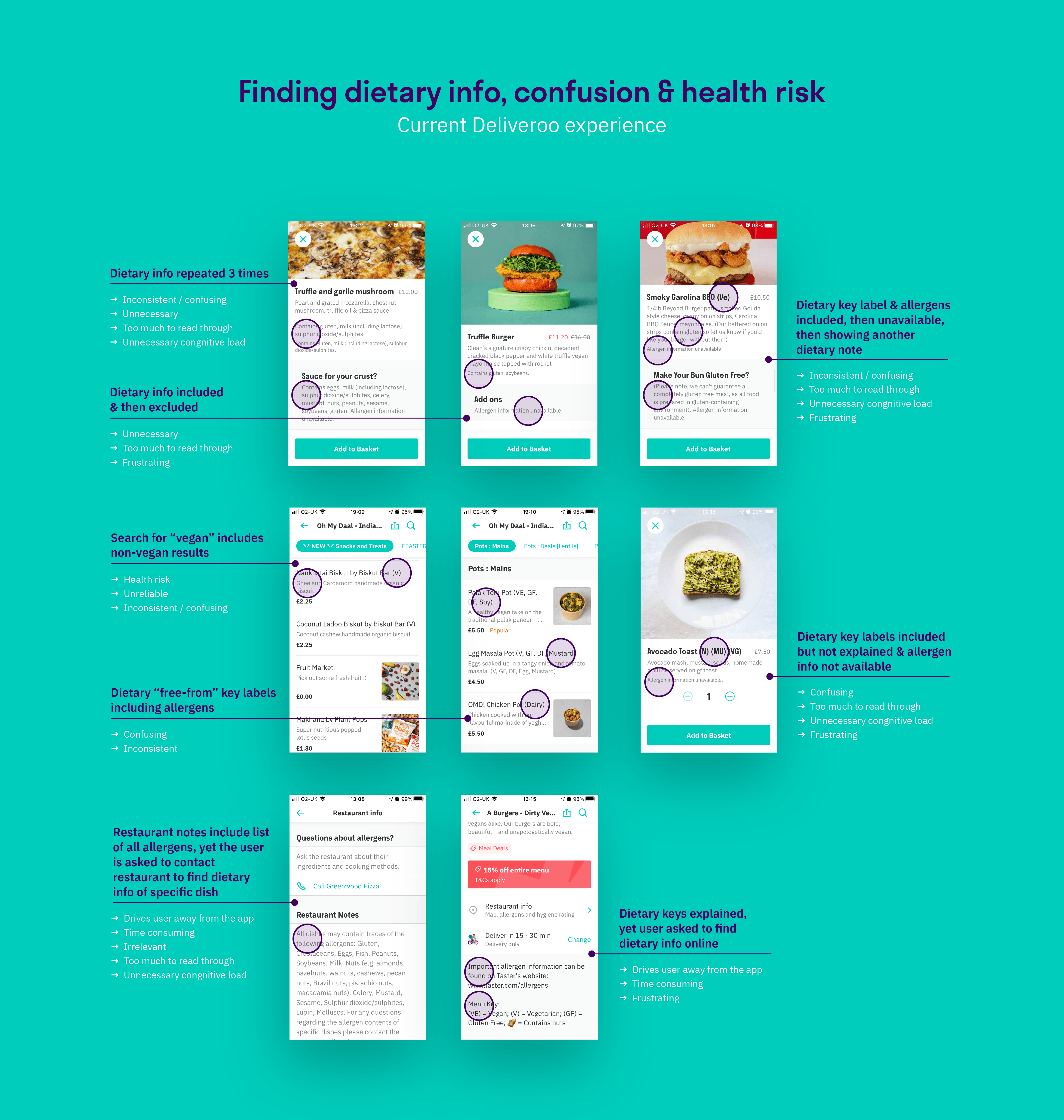
Highlighted as the biggest pain points amongst the users ― the lack of readily accessible and reliable dietary information, the complexity of obtaining it and the overload of irrelevant options ― proves the user journey to be unnecessarily complicated, inefficient and even frustrating. May the result be user’s complete disengagement or only very occasional use of the Deliveroo app, these are the challenges encountered while attempting to order:
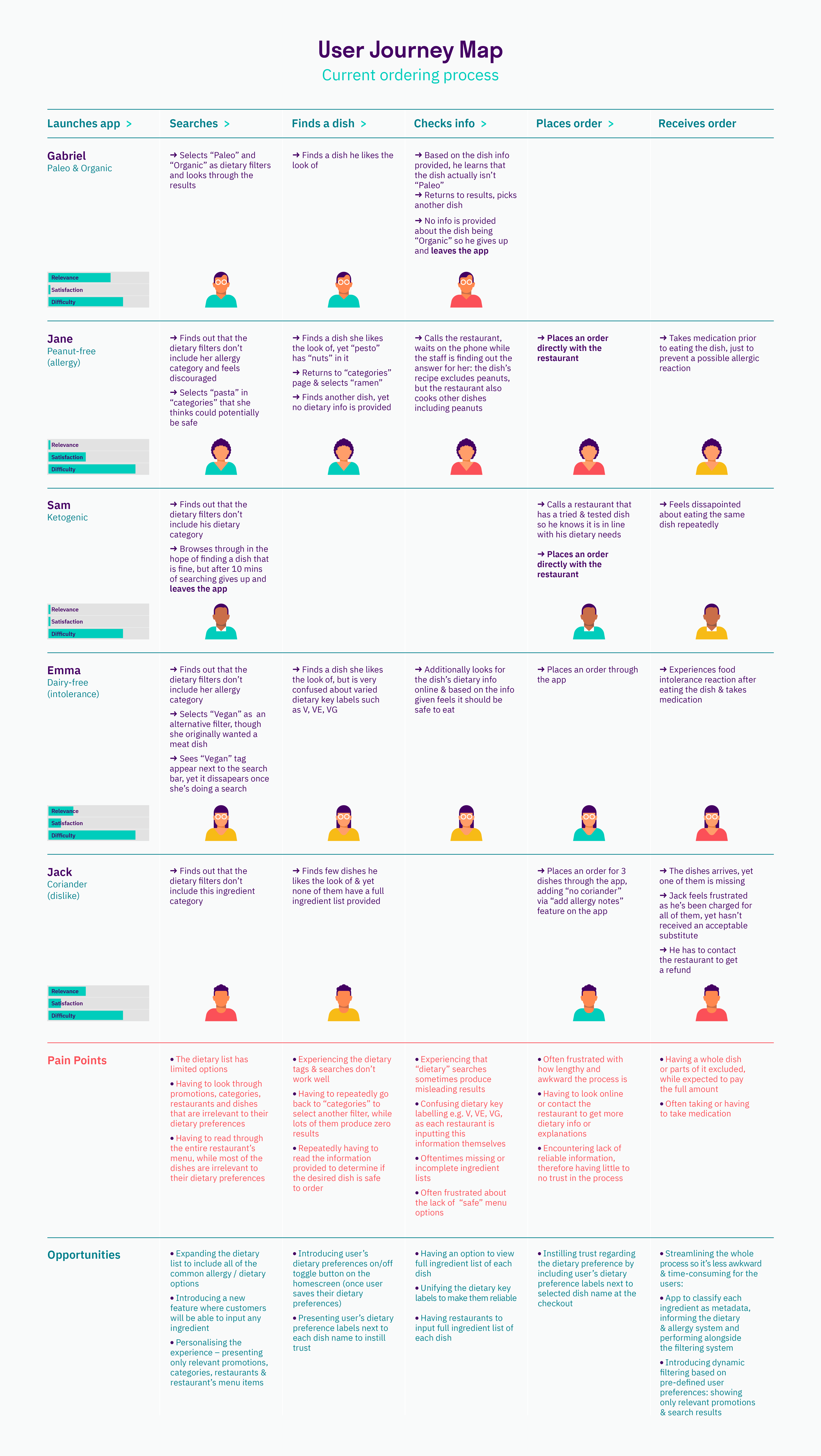
Users’ Pain Points:
― Information provided often isn’t clear/reliable enough
― Having to additionally gather enough information to determine if the dish is “safe”
― Seeing a lot of irrelevant options
― Awkward, repetitive, lengthy and sometimes costly process
Users’ Desires:
― Ability to choose a dish a lot faster
― Certainty the desired dish is “safe”
― More straightforward process
― Seeing relevant options only
― Avoiding food waste
― Convenience
Streamlining the filtering process by systemizing the inputted dietary information while optimizing the experience for the users — such as introducing personalization to increase engagement, retention rate and convenience — would, in the long run, be beneficial to Deliveroo, the customers, and all of the restaurants:
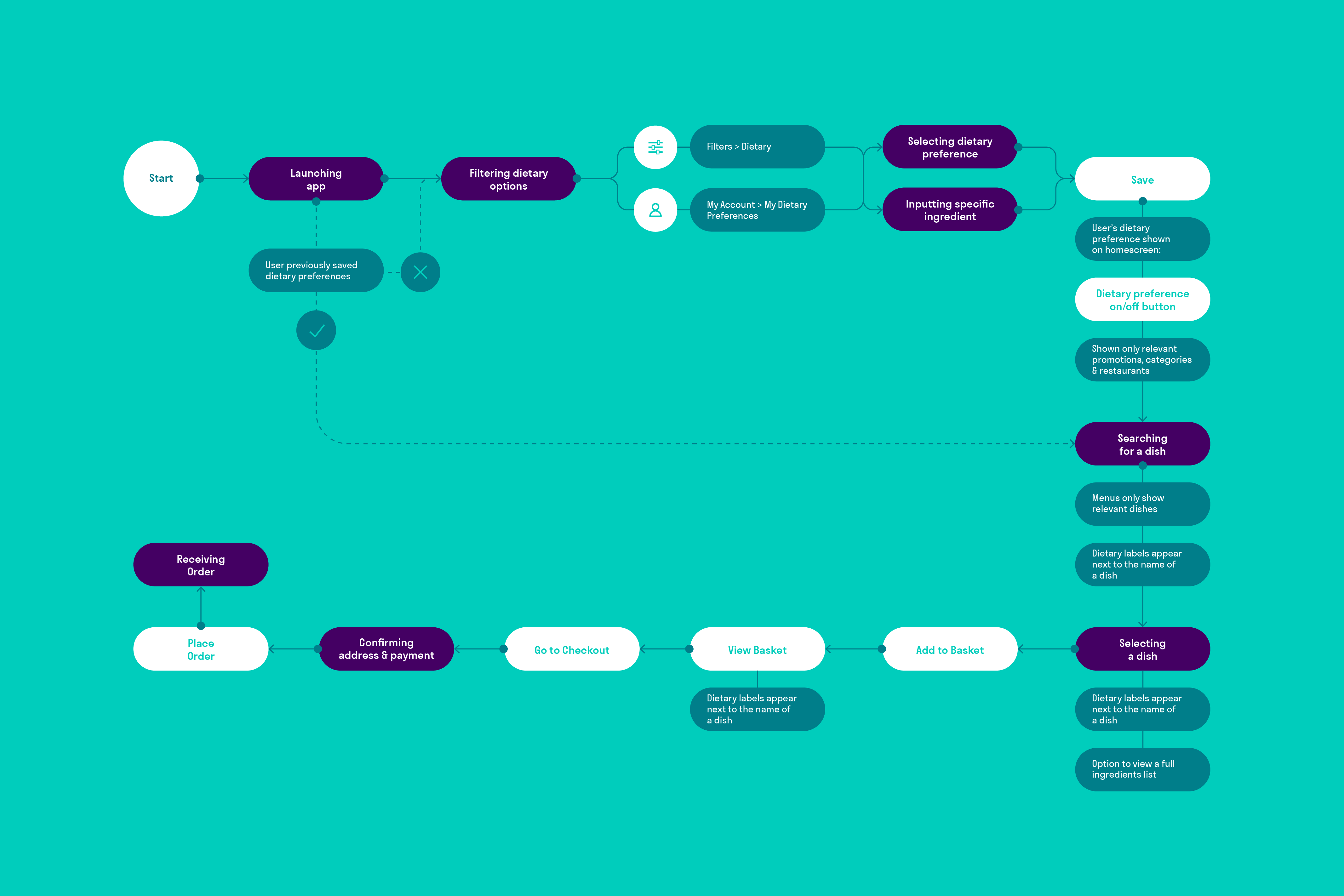
Solution for Deliveroo:
― Introducing full ingredient lists: classifying this metadata to inform the dietary & allergen system that works seamlessly with the filtering system — this would also allow users to filter less common allergens as well as that “coriander” dislike
― Expanding the dietary list to include all of the common dietary preferences: celery, crustaceans, eggs, fish, gluten, lupin, milk, mollusks, mustard, peanuts, sesame, soybeans, sulfur dioxide, sulfites and tree nuts & organic, vegetarian, vegan, halal, kosher, ketogenic, paleo, Whole30 and raw
― Introducing dynamic filtering based on predefined user preferences: showing only relevant promotions & search results
― Saving customer’s selected dietary preferences and displaying them on the homescreen & throughout the checkout process to increase confidence in the right dietary dish being selected
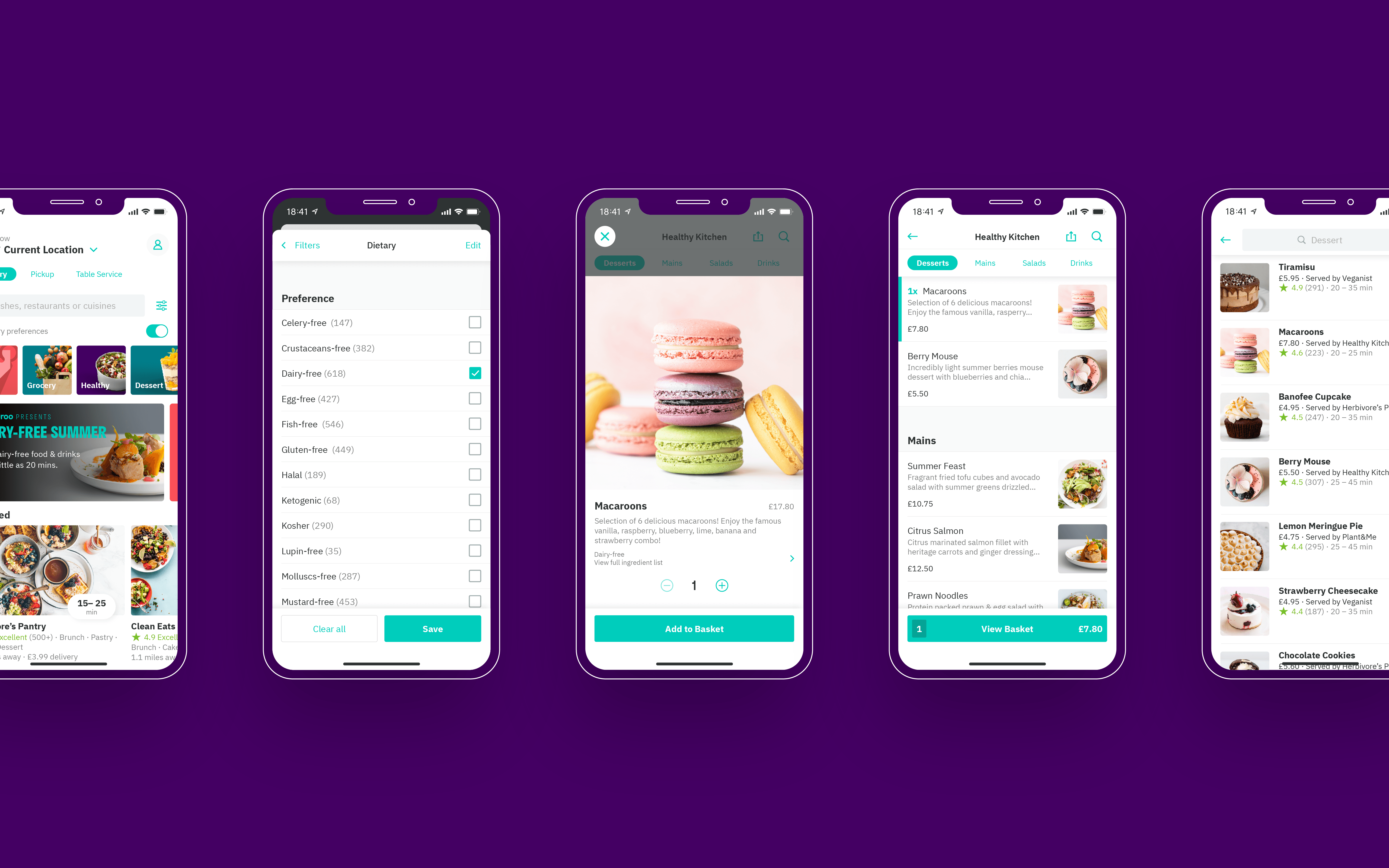
Solution for the users:
― Increasing trust & engagement by showing full ingredient lists and by providing unified dietary & allergen information
― Filtering including all of the common dietary preferences
― Saving user’s dietary preferences
― Showing only relevant promotions & search results
Solution for the restaurants:
― Option to input full ingredient list into this system
― Opt-in/out option for participating

A considerable shift in this direction has already been happening across the whole industry, however, perhaps not yet at an ideal pace. The ever-growing number of the population following specific dietary lifestyles shows us that this trend won’t be slowing down anytime soon and that it’s up to the companies to innovate around this matter sooner rather than later. Moving forward, Deliveroo and the whole food industry could now utilize the data, strategize, and improve their products to stay relevant to user needs.
While this might not be the easiest of features to implement, seeing an influx of a whole new customer base and an increased engagement from the existing one, while bringing in more profits and customer loyalty for Deliveroo as well as for the restaurants, could perhaps be a good reason to do so.